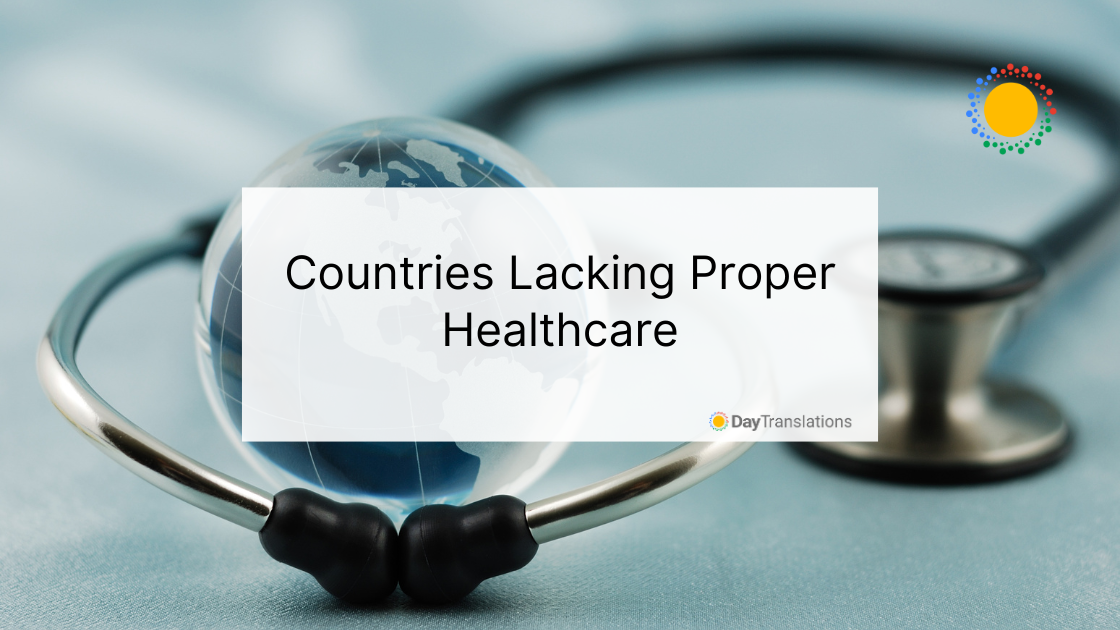This article is part of our Expanding Your Hospital Abroad Guide. If you’re looking to take your medical services overseas, don’t forget to check it out, as it will provide you with some practical strategies to take the necessary steps towards globalization.
___________________________________________________
Several regions in developing countries remain vulnerable because of lack of proper healthcare. Most of these areas are located in Southern Asia and Sub-Saharan Africa. Territories in South Asia include Sri Lanka, Pakistan, India, Nepal, Maldives, Bhutan, Bangladesh and Afghanistan. About 25% of the population of the world is concentrated in this region, making it the world’s most densely populated geographical location and the most populous region. South Asia has a very diverse population.
Based on the World Bank data, 48 countries make up Sub-Saharan Africa. Four countries, Comoros, Mauritania, Somalia and Sudan belong to the Arab States. South Africa is also part of Sub-Saharan Africa.
Scarcity of healthcare providers
Developed countries such as the United States and Japan require the services of foreign healthcare providers to meet the needs of their population. So, you can imagine how scarce healthcare providers are in developing countries. Aside from their dire need for doctors and other healthcare providers, access to proper healthcare is almost non-existent.
Countries that can afford to pay for the services of foreign healthcare providers contribute to the brain drain in other countries. Since they can provide better salaries, accommodation and resources, foreign-trained doctors and nurses opt to work or migrate to other countries rather than serve their fellow citizens. Many of these foreign-trained healthcare providers come from developing countries that have healthcare worker crises. Many foreign doctors in the United States come from Pakistan, India and Ethiopia. Some of these countries may only have one doctor for every 1,000 residents.
The U.S. certification exams pass only the brightest and best professionals from foreign countries, meaning these doctors and nurses are in the top ranks in their counties as well. The lure of a better life for themselves and their families make them decide not use their talents to improve the healthcare services in their home countries and instead work in a foreign land to help patients who can afford to pay.
Gaps in healthcare services availability
Of the number of countries in the world with the fewest doctors, 24 are located in South Asia and Sub-Saharan Africa. Many researches and studies have been made by several organizations. They are trying to pinpoint why access to healthcare is lacking in many developing countries. There are several reasons why this is so. Broadly, income and wealth inequality is one of the main reasons for lack of access to healthcare. General poverty is another reason why a large portion of the population of many developing countries are not able to seek medical care.
For example, Liberia is one of the countries with the worst data, with only 10 doctors available for every 1 million people. Compare that figure to that of developed countries such as the United Kingdom, Canada and the United States where the average is 1 million people served by 3,000 doctors.
What countries lack healthcare the most?
Below is the list of countries with the fewest doctors, according to World Atlas. The list ranks the countries chronologically, with the number of doctors per million inhabitants. Included are the latest available population figures for 2019, from the World Population Review (M = million).
- Liberia – 14 (4.9M)
- Malawi – 19 (19.7M)
- Niger – 19 (23.1M)
- Ethiopia – 22 (110.1M)
- Sierra Leone – 22 (7.8M)
- Tanzania – 30 (60.9M)
- Somalia – 35 (15.6M)
- Chad – 37 (15.8M)
- The Gambia – 38 (2.2M)
- Mozambique – 40 (31.4M)
- Guinea-Bissau – 45 (1.9M)
- Burkina Faso – 47 (20.3M)
- Central African Republic – 50 (4.8M)
- Togo – 53 (8.1M)
- Rwanda – 56 (12.7M)
- Papua New Guinea – 58 (8.5M)
- Benin – 59 (11.8M)
- Senegal – 59 (16.7M)
- Timor-Leste – 73 (1.3M)
- Cameroon – 80 (25.3M)
- Mali – 83 (19.6M)
- Zimbabwe – 83 (17.2M)
- Congo Republic – 95 (5.5M)
- Ghana – 96 (30.1M)
- Guinea – 100 (13.4M)
Why do gaps in healthcare availability in developing countries exist?
Here are some of the pressing reasons why:
1. Deficiency in resources
If you look at the list, you’ll realize that the countries with a serious lack of doctors are some of the world’s poorest countries. These countries are burdened by several epidemics such as HIV/AIDS. Many of them suffer from corruption in the government, civil strifes and natural disasters such as famine and drought. Financial resources are unevenly distributed, as the results of economic development are not properly managed. Often, allocating financial support for a good healthcare system and providing the human resources to run it are forgotten.
People who want to obtain medical education cannot do so because they do not have money. Without money means that those who intend to become medical professionals are unable to realize their dream because they cannot access the required training. In some cases, those who are able to train succumb to the lure of a better life in developed countries, financially and career-wise. Many of the doctors who trained in Africa are now working in different countries.
2. Inequality of service
Within the countries in the list, the inequality in service distribution is already endemic. In such places, the limited number of healthcare providers are often more accessible to people who have the capacity to pay, including successful businessmen, wealthy government workers, and foreigners. These professionals are shared by the rich and the poor. The people with limited financial resources will find it difficult to secure an appointment with a medical practitioner. They can consider themselves lucky if they are able to get a physician’s appointment.
Many countries in South Asia and Sub-Saharan Africa are able to access infant immunization, and family planning. However, they continue to be burdened because they have to pay for these healthcare services on their own.
3. Results of lack of access to proper healthcare
It’s inevitable that more negative things can occur when people are unable to access a physician. The inability to have whatever is ailing them diagnosed immediately is one of the issues faced by the countries with a limited number of doctors. Some people resort to alternative cures or reliefs. Another fact is that they would rather use alternative forms to cure their illness because they do not have money for hospital stays or purchase the medicines they would be required to take.
For many of these countries, almost everything has to be paid by the patient. Often, patients only get poultices, bandages and compresses. They are not able to seek medical treatment even for simple illnesses that are easy to cure, but can pester when left untreated. Some patients suffer complications because they did not receive medical help on time. The complications can lead to social isolation for the rest of their lives.
The scarcity of specialized doctors pave the way for some doctors to perform medical procedures they are not qualified to do, which can result in death or permanent injuries.
What can be done to reverse the situation?
The World Bank and the World Health Organization are only two of the agencies and organizations that are trying to find a balance regarding access to healthcare between the developed and developing nations.
Strategic plans to populate the poorest nations in the world with experienced doctors are being devised. Medical charities invite surgical teams to volunteer their services and work together with local doctors to provide healthcare as well as help the local doctors to learn and improve their skills. A number of organizations such as the Medical Education Partnership Initiative provide support to train doctors in-country.
A better alternative is for doctors from developing countries studying in developed countries to stay true to their resolve to help their fellow citizens by returning to their home country. They can definitely serve more people who desperately need healthcare services, improve the welfare of the local population and ensure that they live healthy lives.
It has already taken more years for developing countries to implement healthcare reforms to help their citizenry. Organizations around the world are still working hard to provide adequate sanitation and safe drinking water and safe food. They are also calling on governments and NGOs to provide adequate housing and nutrition, healthy environmental and working conditions, education and information about health-related issues and equality among genders.
Developed countries provide support to developing nations through various organizations. The World Healthcare Forum for example, is working to have healthcare affordable for everyone in the world.
If you support better access to healthcare and you want to build a healthcare facility in any of the developing countries in desperate need of proper healthcare services, you will be doing the world a great service.
Expertise for your healthcare translation needs
Every translation project is sensitive and complex. But precision and accuracy are critical for healthcare translation services. There are several branches of medicine and different specializations. For healthcare translations to be accurate, subject matter experts are needed to do full justice to the translation. They have the proper training and experience to handle intricate and complex translation projects. When looking for healthcare translation service, choose a professional translation company that offers a full suite of language services like Day Translations, Inc. Our translators and subject matter experts are all native speakers and live in-country. They know their language intimately and understand their culture fully. For your translation requests, get in touch with us by calling 1-800-969-6853. You can also send us an email at Contact us anytime as we are open 24 hours a day, every day of the year.
Image Copyright: LEBLOND Catherine / 123RF Stock Photo












Sorry, the comment form is closed at this time.